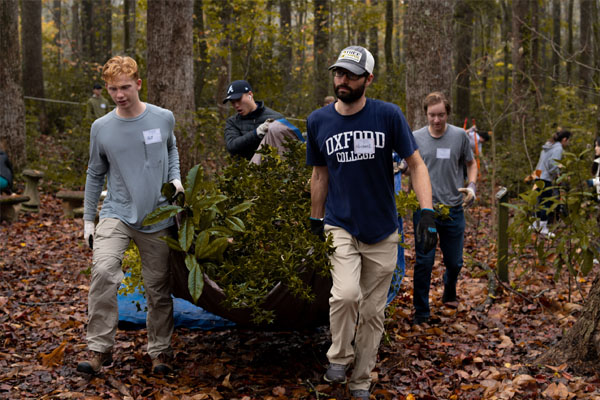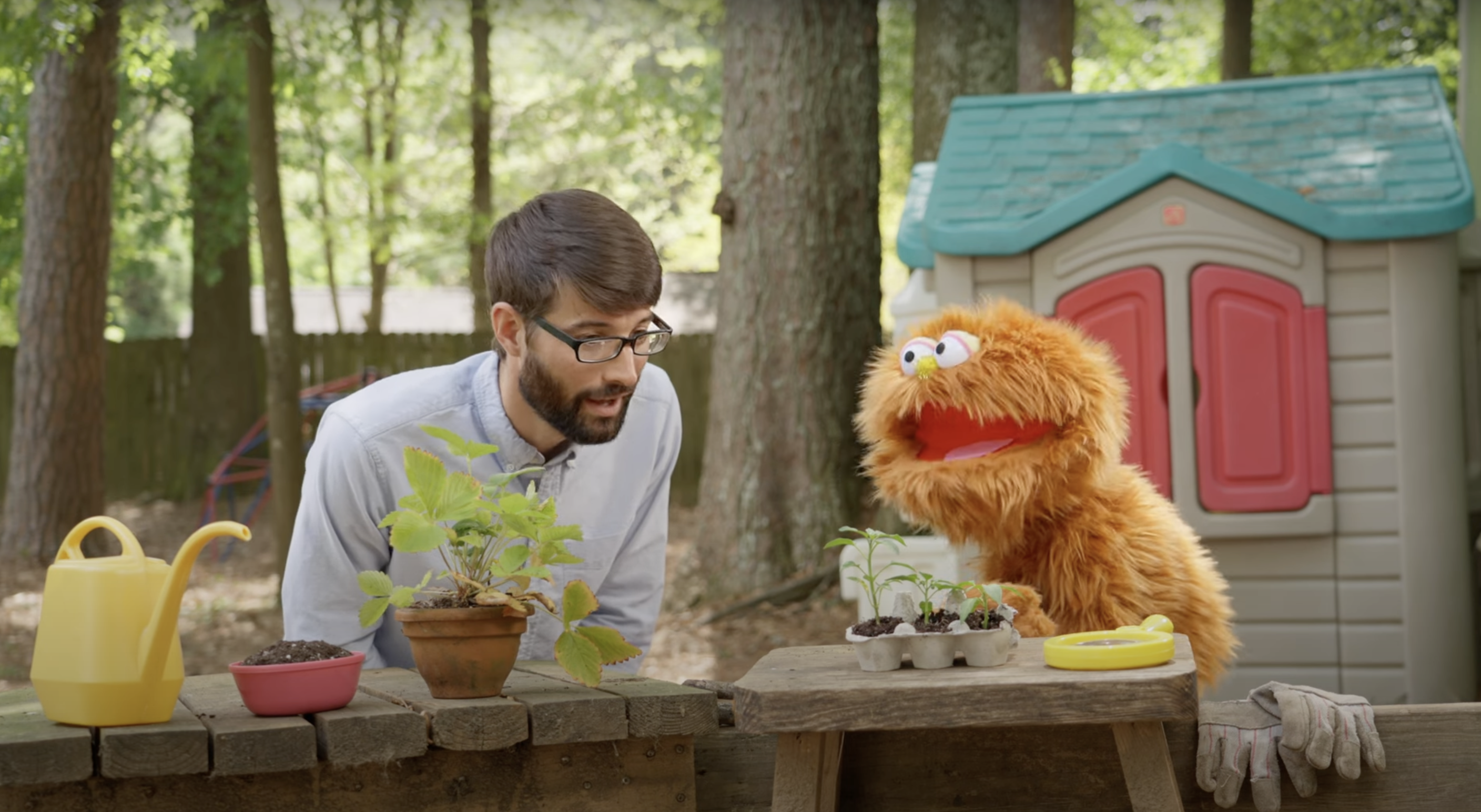Faculty Spotlight: Michael Martin
Oxford’s Professor Michael Martin is all about making connections. You can find the assistant teaching professor of biology huddled with his Oxford students around lab specimens they’ve collected, with them in the field identifying invasive species or planting trees, or off campus engaging preschoolers in the wonders of how a seed grows in his YouTube series “Nature Time.” His message for all students is that nothing in nature—including us—stands alone.
We asked Martin about how this principle guides his Oxford classes in biology and environmental science and beyond the classroom as an “outside biologist” who connects students of all ages with the natural world around them.
Q. What unique qualities do Oxford students bring to your classes, and what do you enjoy most about teaching them?

A. Oxford students are so driven and capable. They have an idea of what they’d like to do and have the skills to get there. I love being a part of their journey as they develop into the people they want to become. And as a professor teaching first- and second-year students, I get to be the start of so many students’ careers in biology. I also see their already keen interests get refined and developed over our two years together; witnessing that growth is my favorite part of teaching Oxford students.
Q. Why do you think Oxford is known for its excellence in STEM education, and how does your approach to teaching contribute to these successful programs?
A. Oxford’s smaller size means that students get unique experiences in and out of the classroom. My classes integrate some hands-on, discipline-specific experiences, whether that’s preparing herbarium specimens in my discovery seminar, curating an aquatic insect collection in my freshwater ecology class, or collecting field data for an independent research project in my biology labs. Course-based lab and field experiences give students a chance to hone their scientific skills like collaboration and critical thinking.
Q. Outside of the classroom, you have included your students in research projects and activities such as planting trees and removing invasive species. How does this help connect them to the study of biology?
A. I call myself an outside biologist. I think many students’ concept of biology involves lab coats, test tubes, and DNA. I want to take every one of my students outside so they can see the biology happening there too. Right now, we have projects looking at restoring native plant communities, measuring tree biodiversity in campus forests, and measuring the mental health impacts of trail walking. I couldn’t do any of this work without my students who collect plant data, measure tree size and location, recruit study participants, analyze all the data, and present the work at conferences and symposia. Removing invasive species and planting trees is another way to help students feel connected to nature and the biology going on there— whether that’s photosynthesis or food webs or pollinators.
Q. You created a YouTube program, “Nature Time,” to encourage preschoolers to appreciate nature and care for the world around them. What gave you the idea for this program, and why is it important to you?

A. In some ways, we live in a more connected world than ever before. Between social media and our modern economy, it feels like we are hooked in and connected to people all over the world. But one connection that seems to be declining is our connection to the nature in our backyards and neighborhoods. “Nature Time” is about giving preschoolers and their parents a chance to discover the nature going on around them. My collaborators and I hope that each story shows them how nature takes care of them and how they can take care of nature.
Q. What has “Nature Time” taught you about how young children learn, and has that impacted the way you teach college students?
A. I think we all learn better when we are interested. Thank goodness I have an enthusiastic puppet by my side to keep my little “Nature Time” viewers engaged. I try to bring that same enthusiasm into my college classroom—just without the puppet!
Q. You have received the Mizell Award for teaching excellence and are known around campus for your ability to engage students and mentor them in their study of biology and environmental science. What are some of the ways you do this?
A. My ultimate goal as a teacher is to help my students make a little more meaning out of their lives. I try to get to know them as people in the world, not just as students in my classroom. That might be a short conversation before class starts or a reflection assignment that asks them to relate our current class material to something they’ve learned about before or want to learn more about in the future. I also try to bring in current, real-world examples that relate to the course. I can almost promise any future student of mine that they will hear at least one NPR story for this purpose!
Q. You have held faculty leadership roles in Oxford’s Center for Healthful Living and for OxWell initiatives, programs that encourage students to live healthy, balanced lives. You also have studied how time in nature positively impacts mental health. How does healthy living connect with the study of biology and environmental science?
A. One of the wonderful things about biology is that every one of us lives it every day as a living organism. Nutrition, exercise, and sleep are all helpful ways to meet students where they are in their biological interests, and promoting personal wellness is one way to help students think biologically. Environmental science works in a similar way by promoting sustainable behaviors, such as reducing waste and using alternative transit, which helps students think about their interactions and impacts on the environment.
Q. Have you kept in touch with any of your students as they transition to Emory and go on to successful careers?
A. I try to keep in touch with my students—especially my research students. Many have found research positions in various labs at Emory and then go on to graduate school or medical school. It's hard saying goodbye to students after only two years, but I love getting "thank you" cards as they leave—I've kept every one of them. I enjoy getting updates from them after they've graduated just as much. Developing supportive relationships with students is the reason I love working at Oxford.